
Pergesa is a monotypic moth genus in the family Sphingidae first described by Francis Walker in 1856. Its only species, Pergesa acteus, the green pergesa hawkmoth, was described by Pieter Cramer in 1779.
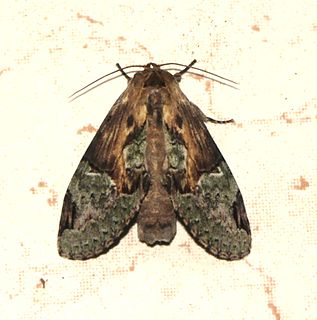
Chadisra bipars is a moth of the family Notodontidae. It was described by Francis Walker in 1862 and is found in the Indomalayan realm.

Trabala vishnou, the rose-myrtle lappet moth, is a moth of the family Lasiocampidae. It is found in south-east Asia, including Pakistan, India, Thailand, Sri Lanka, Myanmar, Java, China, Japan, Taiwan, Hong Kong, and Indonesia. Four subspecies are recognized.

Lophocampa montana is a moth of the family Erebidae. It was described by William Schaus in 1911. It is known from Poás Volcano in Costa Rica.

Orgyia postica, the cocoa tussock moth or hevea tussock moth, is a species of moth of the subfamily Lymantriinae of family Erebidae found from the Oriental tropics of India, Sri Lanka, Myanmar, Borneo, Java, New Guinea and Taiwan. It was described by Francis Walker in 1855.
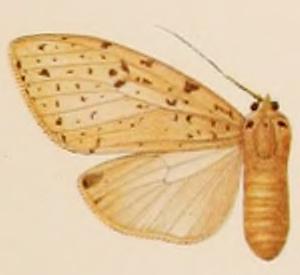
Lophocampa albescens is a moth of the family Erebidae. It was described by Walter Rothschild in 1909. It is found in French Guiana, Suriname and Venezuela.

Lophocampa affinis is a moth of the family Erebidae. It was described by Walter Rothschild in 1909. It is found in Mexico.

Somena scintillans, the yellow tail tussock moth, is a moth in the family Erebidae described by Francis Walker in 1856. It is found in northern India, Sri Lanka, Myanmar and the Andaman Islands. Though considered a minor pest, larva can sporadically be a serious pest.

Lophocampa atriceps is a moth in the family Erebidae. It was described by George Hampson in 1901. It is found in Colombia, Ecuador (Guayas) and Costa Rica.

Lophocampa albipennis is a moth of the family Erebidae. It was described by George Hampson in 1904. It is found on the Bahamas.
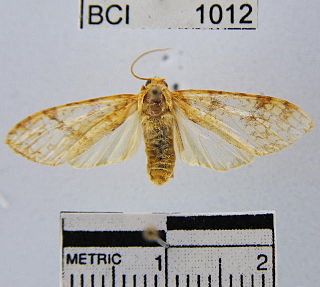
Lophocampa catenulata is a moth of the family Erebidae. It was described by Jacob Hübner in 1812. It is found on Cuba and in Mexico, Costa Rica, Guatemala, Panama, Venezuela, Suriname, French Guiana, Brazil, Peru and Argentina.
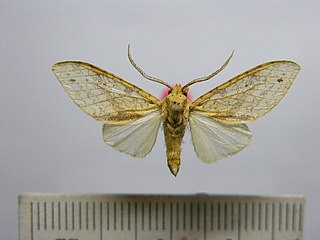
Lophocampa debilis is a moth of the family Erebidae. It was described by William Schaus in 1920. It is found in Mexico, Costa Rica and Guatemala.
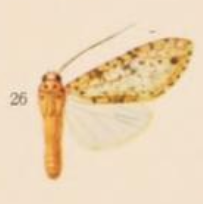
Lophocampa endrolepia is a moth of the family Erebidae. It was described by Paul Dognin in 1908. It is found in Ecuador.

Lophocampa grotei is a moth of the family Erebidae. It was described by William Schaus in 1904. It is found on Cuba.
Lophocampa indistincta is a moth of the family Erebidae. It was described by William Barnes and James Halliday McDunnough in 1910. It is found in California, where it is only found on the Channel Islands.
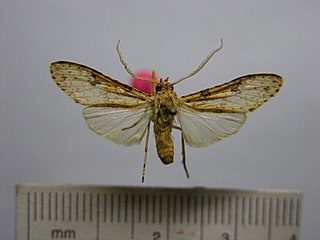
Lophocampa laroipa is a moth of the family Erebidae. It was described by Herbert Druce in 1893. It is found in Costa Rica, Guatemala, Ecuador and Brazil.
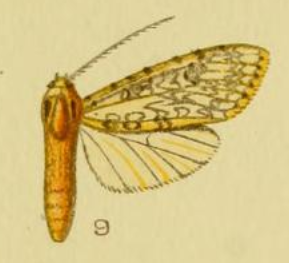
Lophocampa longipennis is a moth of the family Erebidae. It was described by Paul Dognin in 1908. It is found in Bolivia.
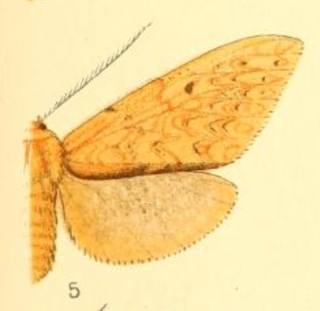
Lophocampa margona is a moth of the family Erebidae. It was described by William Schaus in 1896. It is found in Mexico.

Lophocampa modesta is a moth of the family Erebidae. It was described by William Forsell Kirby in 1892. It is found in Costa Rica, Panama, Suriname, Ecuador, Bolivia, Peru and Venezuela.
Drapetodes fratercula is a moth in the family Drepanidae. It was described by Frederic Moore in 1887. It is found in Sri Lanka, north-eastern Himalaya, Borneo, Bali, and Sulawesi.

















